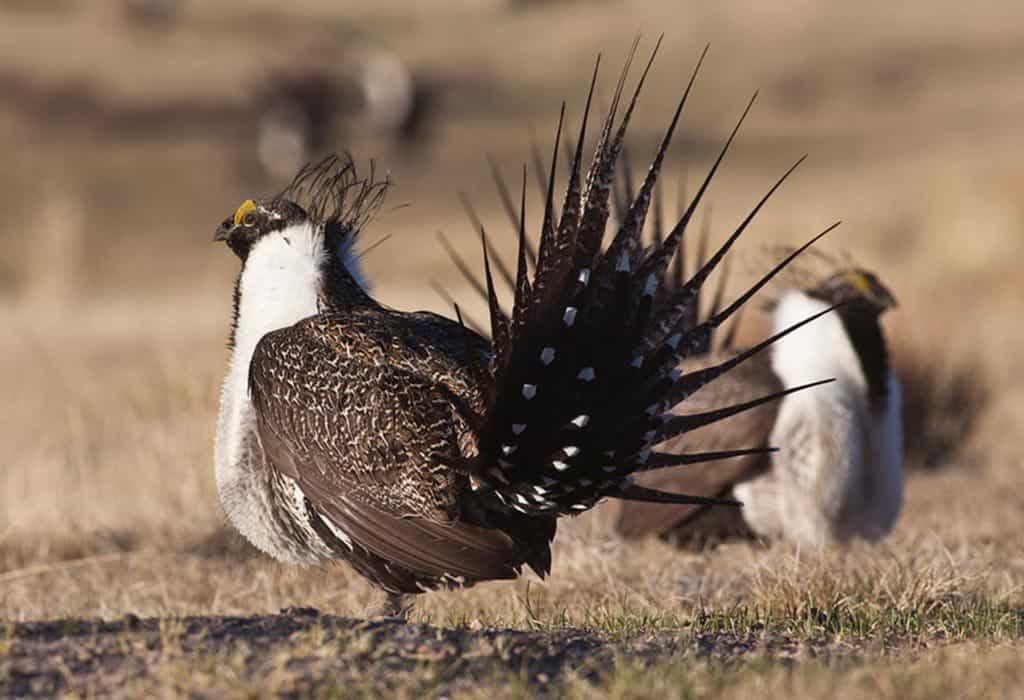Current work in wildlife, rivers, public lands, and climate
Press Releases
Lawsuit Aims to Compel Fish and Wildlife Service to Protect Bi-state Sage Grouse
The bi-state sage grouse lives only in an area along the California-Nevada border and faces multiple threats, including grazing, mining, and habitat loss. Population declines are particularly acute at the northern and southern ends of the birds’ range.
“Federal officials have failed to protect this special bird, and they need to be held accountable under the law,” said Lisa Belenky, an attorney at the Center for Biological Diversity. “It’s disturbing to see officials double down on voluntary measures that have failed to work, even as the bi-state sage grouse population keeps plummeting. Without the legal protection of the Endangered Species Act, multiple threats will push these beautiful grouse to extinction.”
The bird was originally proposed for listing as threatened in 2013, with 1.86 million acres of critical habitat proposed for designation, but the Fish and Wildlife Service abandoned the proposal in 2015. In 2018 a federal court found the agency had wrongly denied Endangered Species Act protection to the bi-state sage grouse and required it to re-evaluate the bird’s situation. The grouse was again proposed for protection, but in March 2020 federal officials denied protection.
The Fish and Wildlife Service claims its reversal is based on a collection of voluntary conservation measures, but many of those measures have been in place for more than a decade, while the sage grouse has continued to decline.
“Most of the bi-state sage grouse populations are shrinking, and many are now crashing,” said Laura Cunningham, California director of Western Watersheds Project. “Instead of substantive legal protections for sage-grouse habitat from livestock grazing and mining, federal officials are instead pushing removal of more and more old-growth pinyon-juniper woodlands, a practice that provides little benefit to the birds and has actually increased weedy cheatgrass invasions. The Service is utterly failing in its duty to preserve and protect sage grouse.”
The bi-state sage grouse is a geographically isolated, genetically distinct population of greater sage grouse, which are famous for their showy plumage and intricate mating dances, during which the males make popping sounds with large, inflated air sacs.
“The U.S. Fish and Wildlife Service ignored major threats facing these rare birds,” said Taylor Jones, an endangered species advocate with WildEarth Guardians. “The surviving bi-state sage grouse subpopulations are tiny, isolated and face imminent threats. There is no credible excuse for denying them the protections of the Endangered Species Act.”
Sage-grouse populations in California and Nevada are isolated from other sage grouse by unsuitable habitats and former habitat that has been heavily developed. Only an estimated 3,305 birds remain, far below the 5,000-bird threshold scientists consider the minimum viable population.
Efforts to protect the birds, including installing flagging on barbed-wire fencing and vegetation-removal projects, have failed to stem their decline. Federal scientists predict localized extinctions in the north and south ends of the range. Scientists also estimate occupied habitat has already decreased by more than 136,000 acres over the past 11 years.
Bi-state sage grouse are found on lands originally inhabited by the Washoe and Paiute peoples.
The conservation groups filing today’s lawsuit are Desert Survivors, the Center for Biological Diversity, Western Watersheds Project, and WildEarth Guardians. The groups are represented by attorneys from the Center for Biological Diversity and the Stanford Environmental Law Clinic.

The bi-state sage grouse lives only in an area along the California-Nevada border and faces multiple threats, including grazing, mining, and habitat loss. Photo by USFWS.